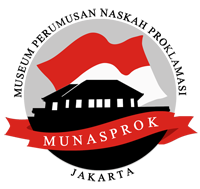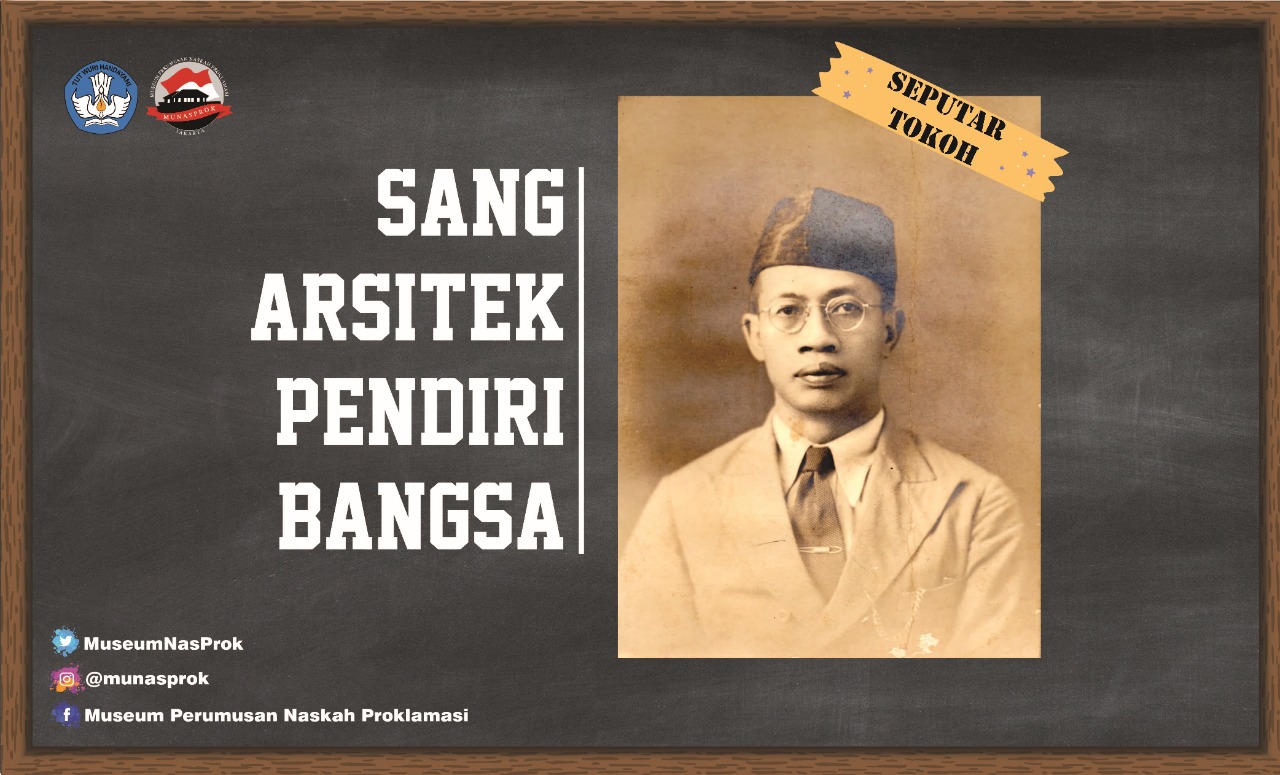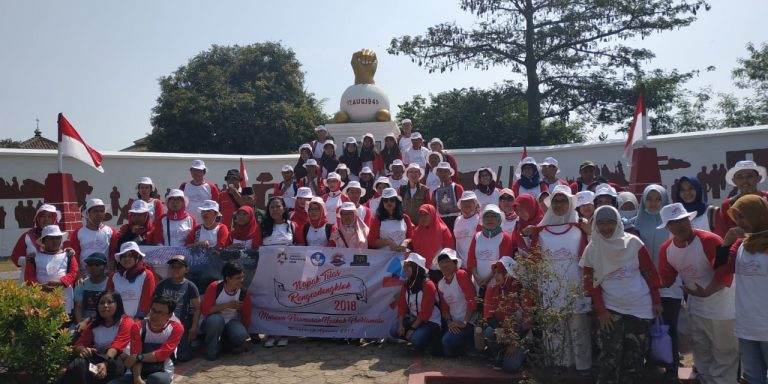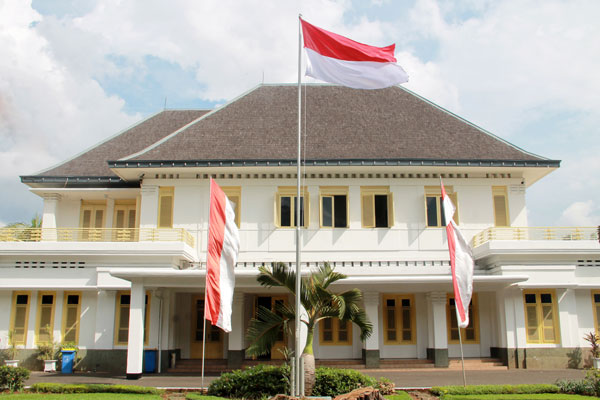Every April 24th is celebrated as National Transportation Day. Regulations regarding public transport are under the authority of the Ministry of Transportation. The first Minister of Transportation of the Republic of Indonesia was Raden Mas Abikoesno Tjokrosoejoso. Abikoesno is one of the Founding Fathers of Indonesian Independence. He is a representative of Muslim members of the Nine Committee who is tasked with designing the Preamble to the 1945 Constitution, also known as the Jakarta Charter.
Abikoesno was born from a distinguished family in Dolopo, Madiun on 15 June 1897. His father, R.M. Tjokroamiseno was a chief of Kanigoro District, Madiun. On June 8, 1917, he graduated from Kiningin Emma School in Surabaya. He is a type of self-taught student who is tenacious and has a strong desire to study independently so he was accepted at Architectsexamen in Jakarta and graduated on 7 February 1925. In the same year, he also managed to get his architect’s degree through a written course sent from the Netherlands which he studied by correspondence. All the material is occupied and the problems are solved by themselves so that he successfully completes his studies well. Abikoesno was a private engineer who passed the examination to get a license to practice as an architect through BOW (Burgelijke Openbare Werken – Public Works Office).
In 1934, R.M. Abikoesno leads the Indonesian Sarekat Islam Party (PSII). Previously, Abikoesno was the branch manager of Kediri and also the Editor in Chief of the Sri Joyoboyo Weekly Magazine, who was vocal in raising economic, historical, cultural issues, etc.
At the beginning of the Japanese occupation period, an Indonesian Government Board was planned which consisted of R.M. Abikoesno Tjokrosoejoso as the premiere, Ir. Sukarno as vice premier and other movement leaders as ministers. On April 29, 1945, the Indonesian Independence Preparatory Agency (BPUPKI) was formed, which was the first concrete step of Prime Minister Kaiso who had promised independence for the Indonesian people as a result of the increasingly tightening of the Japanese defense in the Pacific War against the allies. This body is chaired by Dr. K.R.T. Radjiman Wediodiningrat and members totaling 60 Indonesians from Java, Sumatra, Maluku, Sulawesi and several European, Chinese and Arabic descendant.
Abikoesno is one of the representatives of Islamic leaders who actively contributed their thoughts in preparing for an independent Indonesia at BPUPKI sessions.
In the session of July 10, 1945 at the Jakarta Pejambon Building a Small Committee of 9 people or better known as the Nine Committee was determined. Abikoesno together with Ir. Sukarno as chairman, Moh. Hatta, Subardjo, Wachid Hasyim, Kyai Kahar Muzakkir, Muh. Yamin, H. Agus Salim and Mr. Maramis joined the committee. The committee has the task of perfecting the principles and foundation of the country and successfully formulating the Preamble to the Constitution. In a follow-up session on July 14, 1945, Ir. Soekarno reported the work of the committee that succeeded in formulating the Preamble of the Basic Law or better known as the (Jakarta Charter) which included the basic formulation of the state and the Basic Law consisting of 42 Articles.
After the Independence Proclamation was announced on August 17, 1945 around the country and the world, the next day the Indonesian Independence Preparatory Committee (PPKI) held its first session at the Jakarta Arts Building and produced several state and political decisions for an independent Indonesia. Decisions taken include ratification of the State Constitution and electing the President and Vice President, namely Ir. Soekarno and Drs. Moh. Hatta and the President will be assisted by a National Committee. The second session of the PPKI on August 19, 1945 established the formation of twelve departments and Abikoesno was appointed Minister of Transportation, namely from August 19 – November 14, 1945. Although the term of work was relatively short, Abikoesno had made many contributions to facilitate transportation within Indonesia. He began opening access to inter-city transportation such as the opening of the Jakarta-Merak railroad and succeeded in developing a transportation renewal program which is an important factor in boosting the economy, trade and others.
Aside from being a politician who had a big hand in the founding of Indonesian Independence, Abikoesno also undertook his job as an architect which forced him to move cities. This also happened during his household life with R.A. Kusmartinah, who were both descendants of the royal family Kanjeng Susuhunan Paku Buwono III, King of Surakarta, as Abikoesno was a descendant of Sri Sultan Hamengkubuwono I, king of Yogyakarta. They were blessed with seven children. From the beginning of marriage until the birth of their second child, they lived in Kediri for four years. Then he moved to Semarang to work as a building contractor for five years. Then he moved to Bandung for two years before finally settling in Jakarta until independence. In pursuing his profession as an architect, Abikoesno has made many contributions to the work of philosophical ideas between western education and eastern culture and traditions while sticking to religious principles. Some of his buildings have become silent witnesses of his role in the development of architectural development in Indonesia. One important example in the Japanese occupation was when he was ordered to build new buildings in Jakarta including defense and security buildings, the construction of ball rooms and the repair of the Merdeka Palace which at that time was in a near collapse condition. While at the time of independence, Abikoesno’s architectural works included Asy-Syuro Mosque in Garut, Cinde Market in Palembang, M.H. Thamrin Museum in Jakarta, and the Syuhada Mosque in Kota Baru Yogyakarta.
Abikoesno is a fervent, resilient, disciplined, assertive warrior who holds firm the principles of religion in his life. He died in 1968 at the age of 72 years and was buried with a state ceremony at the Surabaya Heroes Cemetery Park accompanied by the prayers of the people of Surabaya who also attended his funeral.
Infographic by IG @devaptr_12 (SMKN 40 Jakarta)



